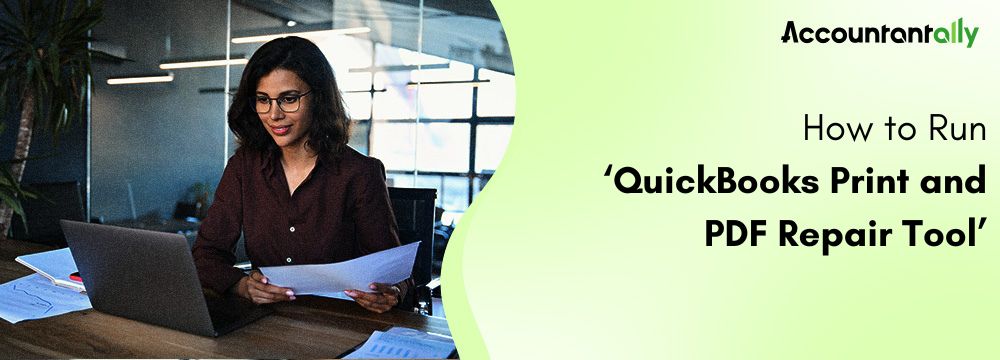Creating invoices is important for handling a business, and QuickBooks Desktop simplifies this task. It helps monitor payments and sustain accurate records. Invoices record sales transactions when customers make no or part payments and manage accounts receivable.
In addition to it, QuickBooks Desktop enables users to create invoices and issue them to buyers. This guide explains how to create an invoice in QuickBooks Desktop for Windows and MAC. Furthermore, this guide talks about the purpose and components of an invoice in QuickBooks Desktop.
What is the Purpose of an Invoice in QuickBooks Desktop?
Creating invoices in QuickBooks boosts financial management. It provides multiple benefits, like:
- Time Savings: Pre-filled customer information, item lists, and templates fasten the invoice creation process.
- Accuracy: Automatic calculations minimize errors.
- Customization: QuickBooks enables branding with logos, fonts, colors, and messages.
- Tracking: It monitors outstanding payments, payment history, and account reconciliation.
- Collaboration: QuickBooks Online allows real-time access and modifications from any location.
- Integrations: It links with inventory, expense tracking, and customer management tools.
Related Topic: Fix QuickBooks Invoice Disappearing
What are the Steps to Create an Invoice in QuickBooks Desktop for Windows?
Use an invoice to record sales when customers make no or part payments. Invoices monitor accounts receivable. QuickBooks Desktop provides different ways to create invoices based on transactions.
Here are the steps to create an invoice in QuickBooks Desktop for Windows:
Step 1: Creating an Invoice from Scratch
Your business should start by creating an invoice when it does not use sales orders or estimates.
- From the Home screen or Customers menu, choose the option “Create Invoices”.
- From the “Customer: Job” drop-down, select a customer or job.
- When the customer is not listed, choose the “Add New” option.
- Type the Date, Invoice #, Bill to/Sold to, and Terms and Enter Invoice Details
- Choose the items in the detail area.
- QuickBooks auto-fills the description and amount based on setup.
- Change or erase details if required.
- Go to the “Lists” menu from the Home screen.
- Select “Item List”.
- Hit right-click and select the “New” option.
- Choose the “Discount” option from the Type drop-down.
- Add an “Item Name/Number” and a short description.
- In the “Amount or %” option, enter the discount value.
- Keep it blank if discounts vary.
- Select an “Income Account” to monitor discounts.
- Choose the “Tax Code” for the item.
- Click the “OK” button.
- Choose the “Save & Close” option.
Step 2: Create an Invoice from a Sales Order
To create an invoice for a fulfilled sales order, follow any of the methods stated below:
From the Sales Orders Window
- Open the “Sales Orders” tab.
- Choose the option “Create Invoice”.
- Choose any one of the options:
- Create invoice for all sales orders: Includes all items
- Create invoice for selected items: Add specific items.
- Modify the invoice if needed.
- In the item list, add a quantity in the “To Invoice” (or Invoiced) column.
- Enter 0 for items not added.
- Choose the “Save & Close” button.
From the Invoice Window
- Open “Create Invoices” from the Home screen or Customer menu.
- Choose a customer from the “Customer: Job” drop-down.
- The “Available Sales Order” window appears.
- Select sales orders to include.
- Modify the invoice if required.
- Add a quantity in the To Invoice (or Invoiced) column.
- Add 0 for items not added.
- Choose the Save & Close button.
Step 3: Creating an Invoice from an Estimate
Convert the estimate into an invoice when a customer accepts it and approves it to a fixed amount.
From the Estimate Window
- Open the estimate.
- Click the “Create Invoice” option.
- Follow the prompts to choose the items and quantities if progress invoicing is enabled.
- Modify the invoice if required.
- Click the “Save & Close” button.
From the Invoice Window
- Open “Create Invoices” from the Home screen or Customer menu.
- Choose a customer from the “Customer: Job” drop-down.
- The “Available Estimates” screen appears.
- Select an estimate to include.
- QuickBooks allows only one estimate per invoice.
- Follow the prompts to choose the items, if progress invoicing is enabled.
- Modify the invoice if needed.
- Click the Save & Close button.
Step 4: Steps to Create an Invoice for a Purchase
QuickBooks Desktop does not use invoices for purchases. It records expenses using bills, checks, or credit card charges. However, if an invoice is required for a purchase, follow these steps:
- Open QuickBooks Desktop.
- Go to the “Customers” option and click the option “Create Invoices”.
- Choose the Customer/Job you are billing.
- Fix the Date and Invoice Number.
- QuickBooks auto-generates the invoice number.
- Select the Terms.
- Include the Purchased Items.
- In the Item column, choose the product or service.
- Add the Quantity, Rate, and Amount.
- Implement Sales Tax, if required.
- Check the Total Amount.
- Add a Memo or Customer Message (Optional).
- Click the option “Save & Print” or “Save & Email”.
Related Topic: Fix QuickBooks Payments Issues
What are the Steps to Create Invoices in QuickBooks Desktop for Mac Plus?
Create an invoice when a customer agrees to pay on a fixed date. Convert an estimate to an invoice if required and perform the prerequisites before creating an invoice in Mac.
Before Creating an Invoice, check these points:
- QuickBooks displays open estimates for customers.
- Invoice incurred expenses for repayment.
- Use progress invoicing for half payments.
- Create or modify invoices in Transactions.
Step 1: Show Customer’s Total Balance on an Invoice
Here are the steps to show the total balance of a customer on an invoice:
- Go to the “Invoice” option.
- Choose the “Template” dropdown and click the “Edit Current Template” option.
- Choose the “Customer: Job/Group” dropdown, then select a customer or job.
- Open the “Fields” tab, then choose the “Footer”.
- Check “Print” for “Customer Total Balance”.
- Drag the field to the preferred position.
- Go to the “File” option and click the “Save” button.
- Click the “Preview” button.
Note: Set up online payments to include payment options.Step 2: Turn On the Estimates Feature
Here are the steps to turn on the Estimate feature:
- Go to the “Settings” option.
- Choose the “Sales and Invoicing” option.
- Click the “Estimates” tab.
- Check Customer and/or Job Estimates Are Prepared.
Step 3: Convert an Estimate to an Invoice
To convert an estimate to an invoice, follow these steps:
- Go to the “Customers” option and then click the “Create Estimates” button.
- Choose a customer or job from Customer: Job/Group.
- Select an estimate.
- Click the button “Create Invoice”.
- Choose the “No” option to proceed if a prompt appears for progress invoicing.
- Click the “OK” button.
- Click the “Save” option.
The invoice comprises all the details from the estimate. Modify, customize, or add items as required.
Related Topic: Troubleshoot QuickBooks Merchant Services Not Working
What are the Components of an Invoice in QuickBooks Desktop?
Here is a list of the components of an invoice in QuickBooks Desktop:
- Header Information
- Invoice Number: Exclusive identifier for monitoring.
- Invoice Date: Date of issue.
- Due Date: Payment deadline.
- Billing and Shipping Address: Customer information.
- Terms: Payment conditions.
- Itemized Product/Service Details
- Item Name/Service: Explanation of product or service.
- Quantity: Number of items sold.
- Rate: Price per unit.
- Amount: Total per line item.
- Tax Code: Shows tax applicability.
- Subtotal and Totals
- Subtotal: Sum before taxes or discounts.
- Tax: Sales tax, if applicable.
- Discount: Applied reductions.
- Shipping Charges: In case it is applicable.
- Total Amount: Final payable amount.
- Additional Information
- Customer Message: Notes for the customer.
- Memo: Internal notes (not visible to the customer).
- Payment Instructions: Bank information or payment methods.
QuickBooks Desktop enables customization. Users can add or remove fields as required.
Related Article: How to Create and Send Invoices in QuickBooks Online
Final Words
Invoicing is more than a payment request. It boosts business-customer communication. Proper invoicing guarantees steady cash flow, minimizes errors, and upholds professionalism. QuickBooks simplifies invoicing from creation to payment. It saves time, avoids mistakes, and allows businesses to focus on growth instead of paperwork. Our certified QuickBooks support team includes top professionals and experts. Contact us anytime for help at 1800-974-3985.







